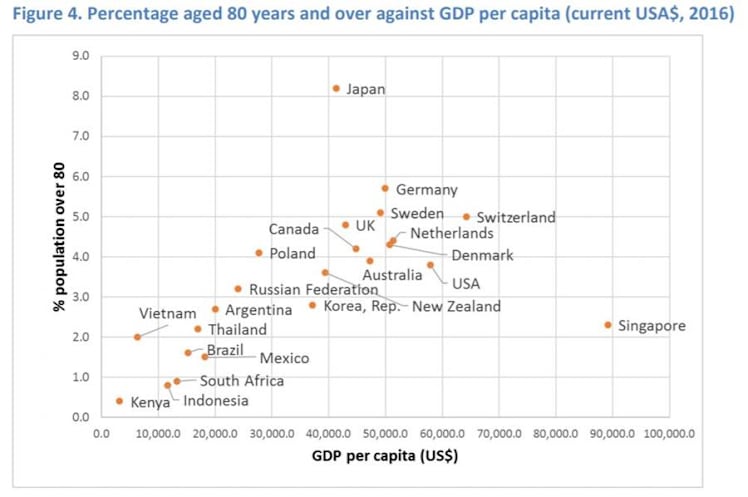The government would need to more triple the current $20.1 billion spent on residential care and home care in Australia in order to match the 4% of Gross Domestic Product (GDP) that Denmark and Sweden – rated as having the best aged care systems in the Royal Commission’s second research paper ‘Review of International Systems for Long-term Care of Older People’ – spend on their older citizens.
That’s an estimated $75.6 billion that would need to be funnelled into supports for older Australians from the country’s $1.89 trillion GDP.
It’s a huge amount – so what would $75 billion ‘buy’ us?
I’ve gone through the paper to examine the systems for both countries and how they compare to Australia.
There are several factors that seem to play a role in their ‘success’ – and show again why the Royal Commission is looking at these options:
- A move away from institutional care to care in the home
- A focus on rehabilitation and ‘reablement’
- Services provided and funded at the local level
- Higher staffing and increased training opportunities for workers
- More choice for consumers in how they spend their funding
- Increased supports for family members caring for older relatives
Denmark
While Denmark has aged care facilities, there has been a move away towards institutionalised care with 80% of long-term residential care provided at home.
Many traditional aged care homes are being replaced by care homes where residents are treated as ‘tenants’ and can apply for housing allowances.
Rehabilitation has also become a compulsory part of receiving home care services and is offered to recipients before they are assessed for personal care and home maintenance services.
It’s not a cheap system, but it pays off. While the country spends more of its money on home-based care, most recipients rely on relatively few hours of care – suggesting the ‘reablement’ approach is working to keep people healthier for longer.
Interestingly, services are provided at the local level by the 98 local governments using block grants, but most facilities are publicly owned – just 14% are run by private operators.
Denmark also has national minimum requirements for workers’ training and qualifications, higher staffing levels compared to Australia and ultimately – higher levels of satisfaction with quality of care.
In contrast, the latest Productivity Commission annual report says Australians’ satisfaction with quality of care has fallen to 84% in 2019 from 89% in 2015.
Sweden
The Swedish system bears a closer resemblance to Australia’s with the national government responsible for aged care policy and legislation.
But again, local councils take responsibility for delivering residential and home care services.
The taxpayer also foots most of the bill – around 90% with the remaining 10% equally distributed between consumers and the national government.
Some local areas also provide cash benefits for care recipients – giving them more choice in how they spend their funding, though these are not universal.
Also, of note is the fact out-of-pocket costs for a person on a median income are deemed to be affordable – unlike Australia where the majority of recipients qualify to be supported by the government.
While regulation is considered light in contrast to other countries, workers are also required to be registered. This data is publicly available and allows services to be rated.
And although national training for aged care workers is not mandated, staff can undertake a voluntary four-year education program if they don’t have formal qualifications that is backed by public funding.
Sweden also got points for lower levels of antipsychotic medication and again user satisfaction.
In addition, both countries allow family members to be approved as home care workers and receive payments for providing care, usually at the local level.
However, it is worth looking at the data again.
There is no denying that Australia’s aged care system has its faults – we have seen them played out at the Royal Commission in the past year.
But check out the graph at the top – as you can see, Australia is still doing better than many other countries in caring for its elderly.
Even the United States ranked lower than us on the percentage of GDP spent on aged care.
Are we really in the same category as the US?










